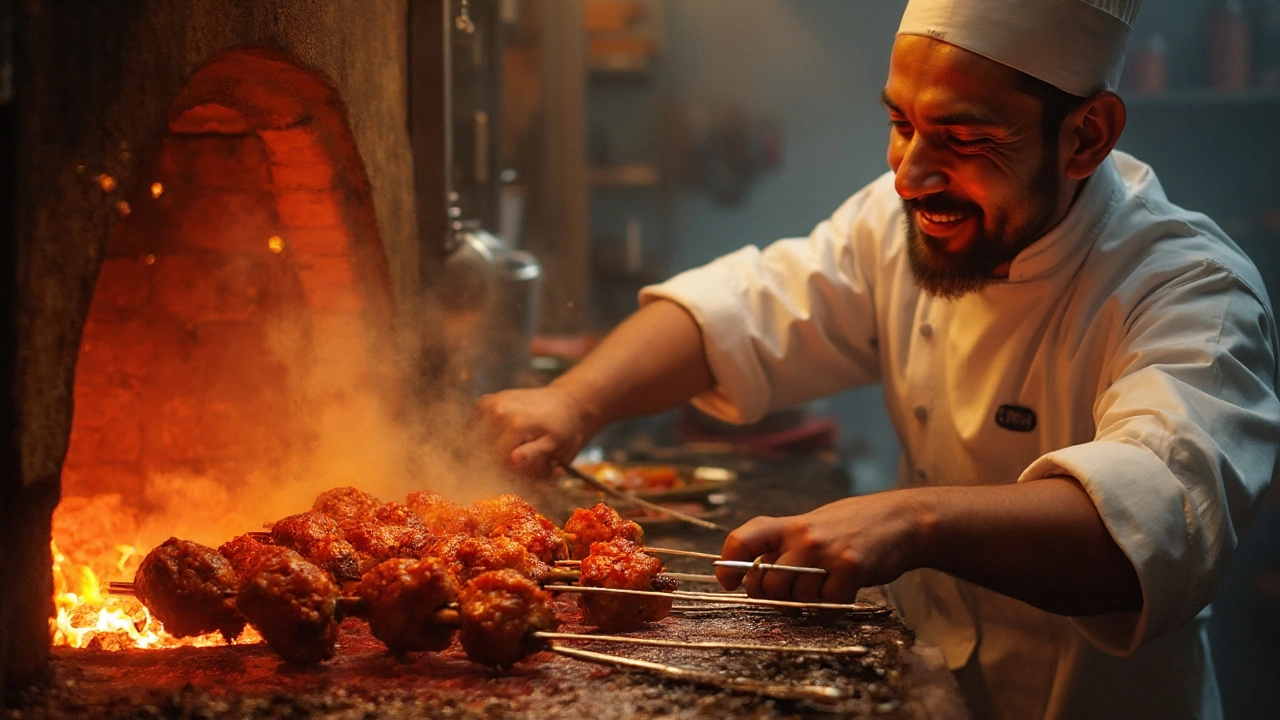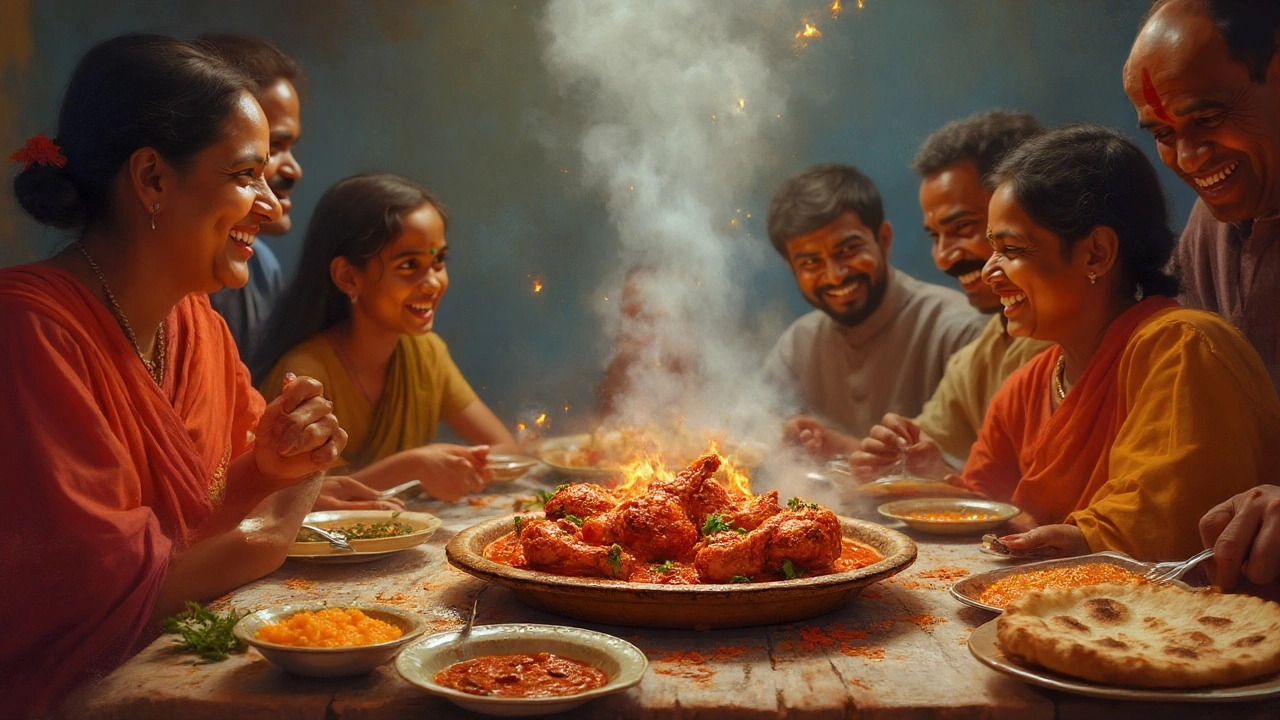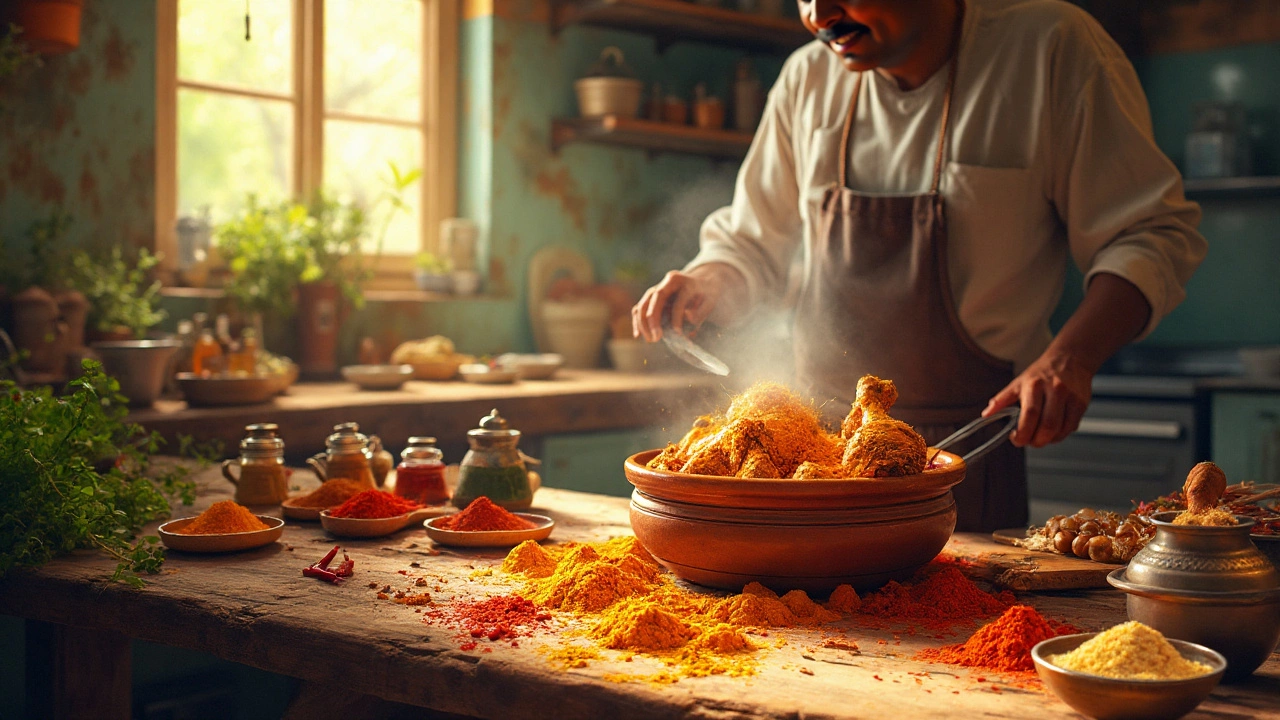The magic behind tandoori chicken’s juicy tenderness feels almost unfair. Chicken legs and thighs are common suspects for dryness in so many kitchens, but at any half-decent Indian grill joint, those same cuts come out impossibly moist and bursting with flavor. It’s not luck, it’s science, history, and a little bit of chef’s know-how all working together.
The Story Behind Tandoori Chicken’s Texture
If you poke around Delhi or Amritsar, you’ll hear endless theories about the origins of tandoori chicken—some romantic, some spicy. The most popular story pins its evolution to Kundan Lal Gujral, who began making it in the 1940s at Moti Mahal in Peshawar before partition. He wanted a chicken that was smoky, not greasy, with a signature tenderness you didn’t find with regular roasted birds at the time. Once he moved to Delhi, he brought his clay oven, or tandoor, with him, and changed how North India cooked chicken forever.
But why is tandoori chicken so tender, even when cooked at high heat? Go back centuries. Indian cooks loved marinating meat for both flavor and texture. They’d use yogurt, spices, lemon—anything sharp and tangy—to work its magic on tougher cuts. The real secret? They understood acids and enzymes long before anyone could spell “protein denaturation.”
There’s also the tandoor, that big, bellied, almost mystical clay oven reaching searing temperatures up to 900°F (480°C). The thick walls radiate heat from all sides, locking in moisture and creating that sought-after char outside while keeping the inside juicy. There’s nothing gentle about this process, but the careful prep beforehand ensures that every bite is worryingly soft.
Even at weddings or home parties, tandoori chicken is the dish everyone waits for—the piece de resistance, if you will. People don’t just want flavor; they come for that unbelievable tenderness, which, as you’re about to see, requires a series of little tricks that all come from tradition and practice.
The Real Impact of Marination
This is where the real transformation happens. Many folks believe throwing some chicken in spiced yogurt for an hour is enough. Honestly? That’s rookie stuff. The best tandoori chicken spends all night (and sometimes a day) marinating, soaking up flavor and getting buttery soft.
Here’s what goes into classic tandoori marinade:
- Yogurt: Not just for tang—it contains lactic acid and enzymes that break down the proteins in chicken, making it softer and juicier. Greek yogurt is a favorite because it’s thick, clings to the meat, and carries flavor deeper.
- Lemon juice or vinegar: These provide the extra acidic punch. Acids loosen protein structure, letting flavors seep in and preventing the chicken from seizing up on high heat.
- Salt: Don’t be shy—salt acts as both a flavor enhancer and a moisture-retainer by allowing the bird to hold more water as it cooks.
- Spices: Cumin, coriander, turmeric, garam masala, chilli—these aren’t just for taste. The oil-soluble compounds in spices mingle with the chicken fat, which means you get a marinade that does more than sit on the surface.
- Ginger-garlic paste: Both ginger and garlic have natural enzymes (like zingibain in ginger) that further break down the muscle fibers, making the chicken even more yielding.
Too many cooks skip the all-important puncture. Use a fork or knife to stab little holes all over the chicken, especially at the thickest parts. This isn’t just anger management after a long day—it’s so the marinade really penetrates.
There’s a funny stat from one of Mumbai’s biggest grill caterers—Sohan Chawla, who says their bestselling tandoori chicken spends exactly 14 hours in the fridge with the marinade. Any less, and the texture isn’t the same.
Quick tip: If you’re in a hurry, go for boneless thigh pieces and massage the marinade in with your hands. You’ll get faster penetration, but you’ll miss the bone-in’s richer flavor.

The Tandoor’s Superpower: High Heat, Low Dryness
Baking chicken at 900 degrees sounds like setting your dinner on fire, but somehow tandoori chicken always emerges juicy. The tandoor is the unsung hero here. Ancient clay ovens radiate heat more intensely than any home grill ever could, but they do it evenly—wrapping the chicken in steady warmth rather than shock-blasting just one surface.
It’s not just about temperature. The shape of the tandoor draws hot air upwards, constantly basting the meat with smoky moisture sealed inside the oven. As the fat renders, it drips down onto the fire or coals below, turning into fragrant, billowing smoke that infuses the chicken. That’s where you get that lovely reddish-gold hue and singed edges.
Home ovens can only do so much, but you can fake the effect with a hot grill or broiler. Crank it up as high as it’ll go, and keep the chicken close enough to the heat source, flipping regularly. Finish with a smoky touch—my favorite hack, taught by a chef in Ludhiana, is to place a piece of hot charcoal in a bowl, set it in with the chicken, pour a few drops of ghee on, and cover it tightly for a few minutes. Instant tandoor aroma, without needing to build a clay oven in your kitchen.
There’s also the myth that fat dries chicken out. In fact, skinless chicken (the tandoori standard) relies on fast, fierce heat to seal in the remaining juices, and the intense temperature helps give you those irresistible crispy bits without making the inside tough.
If you ever wonder why tandoori chicken stays more tender than pretty much any roast chicken you’ve had—look at the numbers. Here’s a quick stat table found in a 2011 Punjab culinary survey:
| Cooking Method | Average Cooking Temp | Cooking Time | Resulting Moisture (%) |
|---|---|---|---|
| Tandoor (Original) | 800-900°F | 15-20 min | 52% |
| Conventional Oven | 475°F | 35-45 min | 41% |
| Grill | 600°F | 25 min | 46% |
That 52% moisture is why each bite slides right off the bone, leaving you secretly wishing you had another round.
Spices and Color: More Than Just Looks
A lot of people picture tandoori chicken as this blazing red or orange, almost glowing in the corner of the plate. Here’s a surprise—the iconic color wasn’t always there. It got more intense as restaurants started using food coloring to appeal to customers, but in traditional recipes, the vivid shade comes mostly from spices like Kashmiri red chili (which gives color but not much heat) and turmeric.
But don’t write off all that color as just Instagram fodder. Those spices soak into the meat during that long marination, and many—especially ginger, garlic, and chili—actively help tenderize the chicken further with their enzymes and mild acids.
If you’re looking for the real deal at home, skip the red food dye and go for Kashmiri chili powder. It’ll give you color, a slight peppery warmth, and no chemical aftertaste. Another tip—add a touch of mustard oil to your marinade. Not only does it give depth, but it opens up the flavor receptors in your mouth, making the taste even more vivid. I learned this from my mother-in-law, who swears it’s the difference between restaurant style and “maa ke haath ka khana” (mom-made food).
Curious about spice blends? Every region (and family) has their own. A Punjab-style tandoori blend is heavier on cumin and coriander, while Lucknow may add a dash of kasuri methi (dry fenugreek). You don’t need to get precious about authenticity. The common thread? They’re all layered, rich, and work with the acid and yogurt for an even juicier result.

Home Tips: Your Own Tandoori Masterpiece
I’ll be honest—nothing matches the smoky, primal experience of eating tandoori chicken fresh out of a real clay oven, hot naan at hand. But there’s a lot you can do to get super juicy chicken at home that makes you wonder why you’ve ever settled for bland roast chicken again.
- Always marinate for at least 6 hours, 12 is perfect. Don’t rush. If it’s got a good yogurt-ginger-garlic base, flavors will only get better overnight.
- Make deep cuts (not just pokes) in the thickest part of the thigh and drumstick. Get that marinade all the way in.
- If you’re using chicken breast (not traditional, but works when you’re desperate for protein), pound it first to even thickness. Marinate longer.
- Crank your oven up to max and cook on a rack set over a tray. This mimics the air circulation of a tandoor.
- For a smokier finish, use the “dhungar” (smoke) method: place a hot piece of charcoal in a small bowl in the tray, drizzle in some ghee or butter, and cover quickly for a blast of aroma.
- After it’s cooked, rest the chicken for 5 minutes before slicing. It will lock in moisture instead of drying out.
At our house, Rohan is chief chicken-taster. He swears the difference is in the feel—when each piece still glistens with juice and breaks apart at the gentlest tug. Serve with onions, lemon wedges, mint chutney, and enjoy the weird silence that falls when hungry people finally get their hands on next-level tandoori.
Ready to give it a try? Tandoori chicken isn’t magic—it’s technique, tradition, and just a bit of science packed into a legendary bite. The real secret is patience. And maybe a big enough plate for seconds.
